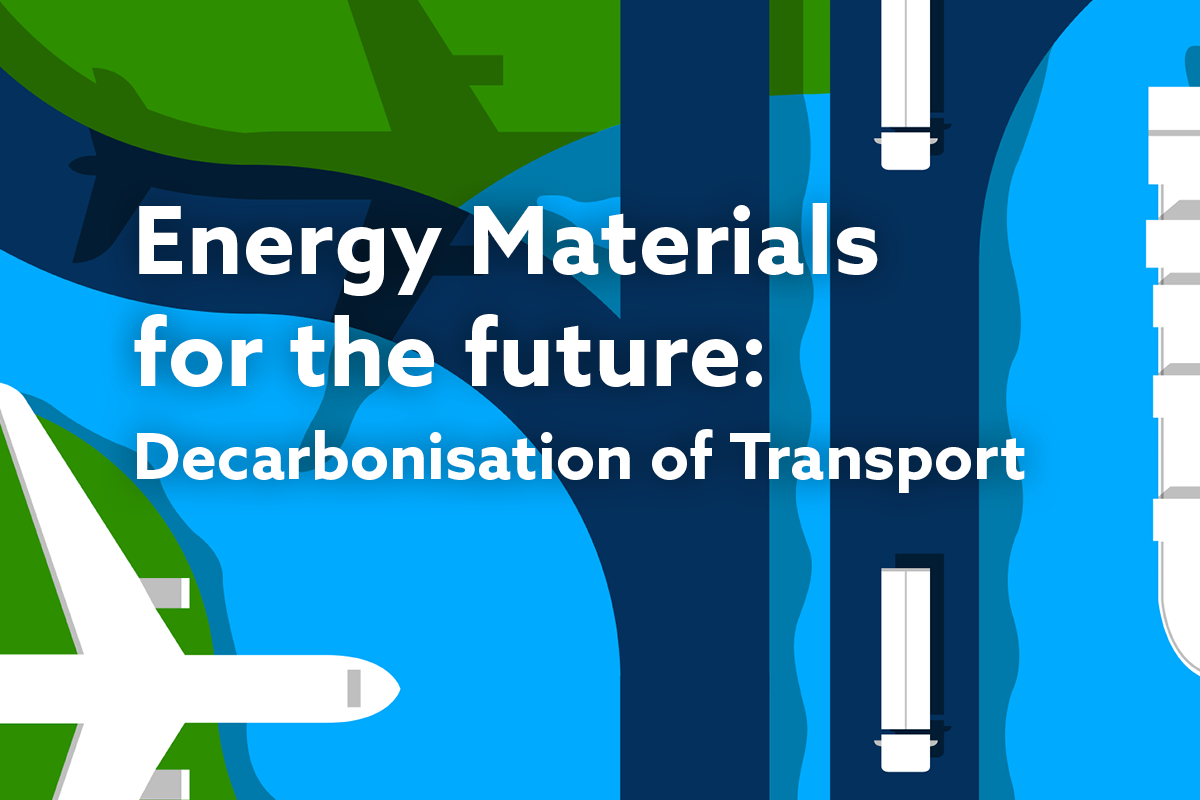Energy Materials for the Future: Decarbonisation of Transport
Energy Sources for Transport

This series of webinars will be a highlight of the IOM3 Energy Materials Group calendar for 2021 in the run up to COP 26 and is a must for energy materials professionals, those working in the transport industry, policymakers those working in energy materials research.
Energy for transportation (land, sea and air) accounts for approximately a quarter of the global energy demand, the second largest after industrial demand and ahead of domestic. The decarbonisation of the energy sector is essential to achieve climate change goals set by the Paris agreement. This is all the more challenging considering that liquid fuels, mostly fossil fuels, account for 95% of the energy supply for transport. This virtual conference, organised by the Energy Materials Group, will bring together experts that will address the impact of transport on climate change and the role that energy materials can play as a game changer in the transition in decarbonising transport.
In this first webinar in the series we bring together five speakers from a range of backgrounds to focus the discussion on energy sources for transport.
Solid-State Batteries for xEV application | Dr Ulderico Ulissi
Cells chemistries based on Solid-State Electrolytes (SSE) could be characterised by increased safety and a wide temperature stability/working range, potentially leading to low cost and high energy Electrochemical Energy Storage (EES) systems. In this perspective presentation, Nissan research will discuss why solid-state batteries could be an exciting opportunity for the future of energy storage for xEV application. The presentation will also touch on critical issues that remain at the lithium metal/solid electrolyte interface. By presenting results obtained in partnership with a leading university, Nissan research will briefly touch on the state-of-the-art in solid-state batteries and explain why materials science and analytical electrochemistry can play a pivotal role in enabling this exciting technology. The presentation will close with some remarks around open toward large scale production for xEV application.
Solid Electrolyte Interphases in Lithium-Ion Batteries | Dr Juyeon Park FIMMM
A solid electrolyte interphase (SEI) is generated on the surface of Lithium-ion battery electrodes during the formation manufacturing process. The SEI is an ‘essential evil’ as it provides a passivation layer on the electrode surface, which inhibits further electrolyte decomposition to enhance battery longevity, while it increases the device resistance due to its electronically insulating properties, resulting in diminishing power capability. Thus, optimisation and control of the SEI by the formation process, along with electrolyte composition, are critical. This talk will address the application of fundamental understanding of SEI formation to industrial application, including cell design optimisation through the manufacturing process and selected case studies.
3D printing a new generation of energy devices | Dr Albert Tarancón
High temperature energy devices, such as Solid Oxide Cells (SOC), are based on ceramics or cermet materials where active area and microstructure play an important role in the device performance. Therefore, the capabilities of the additive manufacturing technologies in their fabrication can bring clear advantages in terms of performance and functional complexity but also offers benefits on the production cost and fabrication processes. In this talk, we will discuss recent advances of our research on highly performing solid oxide fuel and electrolysis cells (2,3) and complete stack manufacturing by hybrid multimaterial printing. Moreover, we will present the current work on 3D printed ceramic reactors.
Decarbonising Britain’s Rail Network with Hydrogen | Stephen Kent
Hydrogen storage materials for future flight | Luke Sperrin
Event Details
- The webinar will be hosted on Zoom
- The session will be recorded and all registrants will receive a link to watch on-demand.
- The session will take place 14:00 - 16:00 BST












